If you’ve played video games such as Need 4 Speed, Gran Turismo, or Forza Horizon, you’ve probably heard of tuning stages before, and you know it has something to do with how a car has been upgraded.
Stage tuning is, in principle, fairly simple and straightforward.
However, it can also be one of the more confusing things when it comes to car modification, as enthusiasts and tuning companies have been throwing the term around so much that it doesn’t really make sense anymore.
When talking about power gains, it doesn’t make sense to use the term “tuning stage” unless all the parts come from one manufacturer or tuner, and they sell them as dyno-proven packages.
Emphasis on “dyno-proven packages”, since they might sell individual parts claiming to add x amount of horsepower; when you combine these parts, you can’t simply add up the numbers.
In addition, installing “Stage 3” tuning parts from various manufacturers and suppliers won’t really make it a Stage 3 tuned car, as there is no point of reference.
So, with that in mind, let’s look at what the different tuning stages mean and what you might expect from the various tuning stages and upgrades.
What Is Stage Tuning?
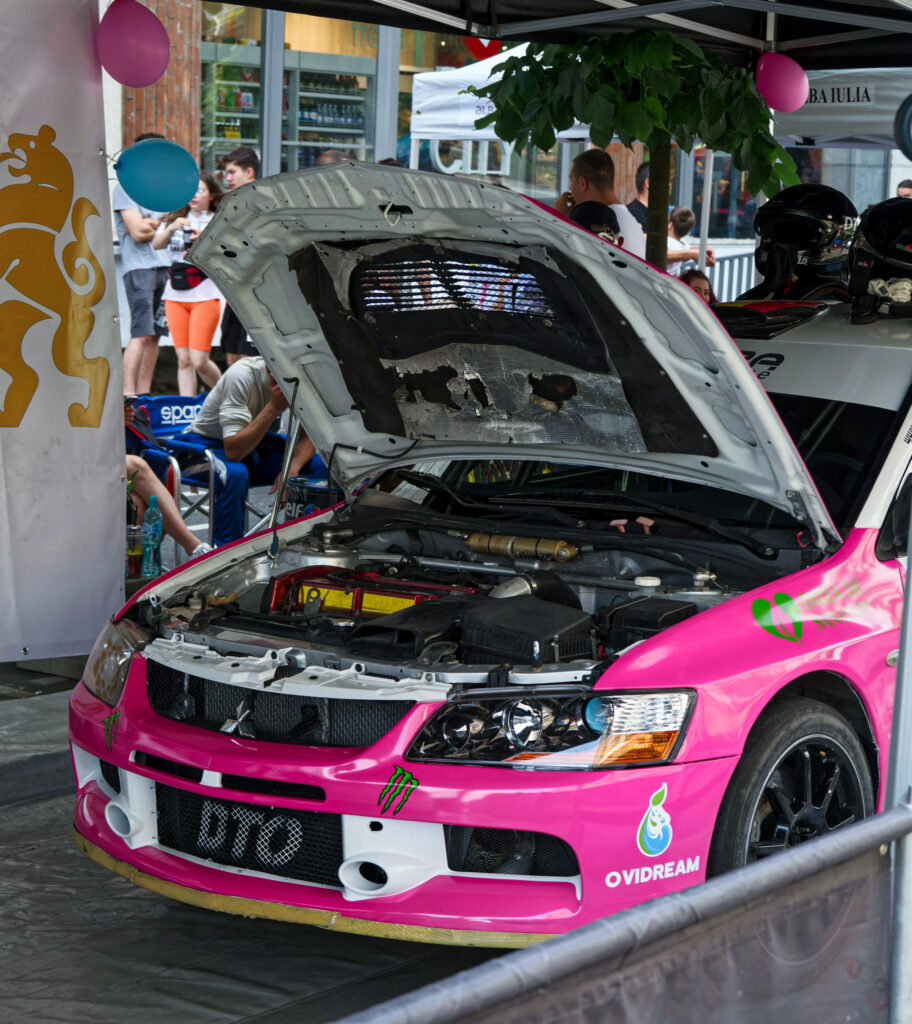
So, as we’ve now explained, a tuning stage basically tells you how much a car has been tuned and modified, and it only makes sense if all the upgrades come from one garage, aftermarket company, or car manufacturer.
For example, a Stage 2 upgrade can differ between tuners and manufacturers, and even between two car models from the same manufacturer. There is no consistent difference between companies’ classifications of tuning stages.
What we can say with confidence is that Stage 2 upgrades are more involving than Stage 1, but not as much as Stage 3. Luckily, there are some basic rules that will help to make it easier to classify the tuning stages.
Stage 1 tuning mods are the most basic and can be fitted in isolation. Stage 2 tuning mods tend to require replacing some OEM parts that limit performance.
Stage 3 tuning mods are the most confusing, but generally require stronger components; in many cases, they’re not street-legal.
Keep in mind that these modifications will vary and this is only a rough guide — we encourage you to contact your favorite tuner to find out what their stages include.
Stage 1 Tune
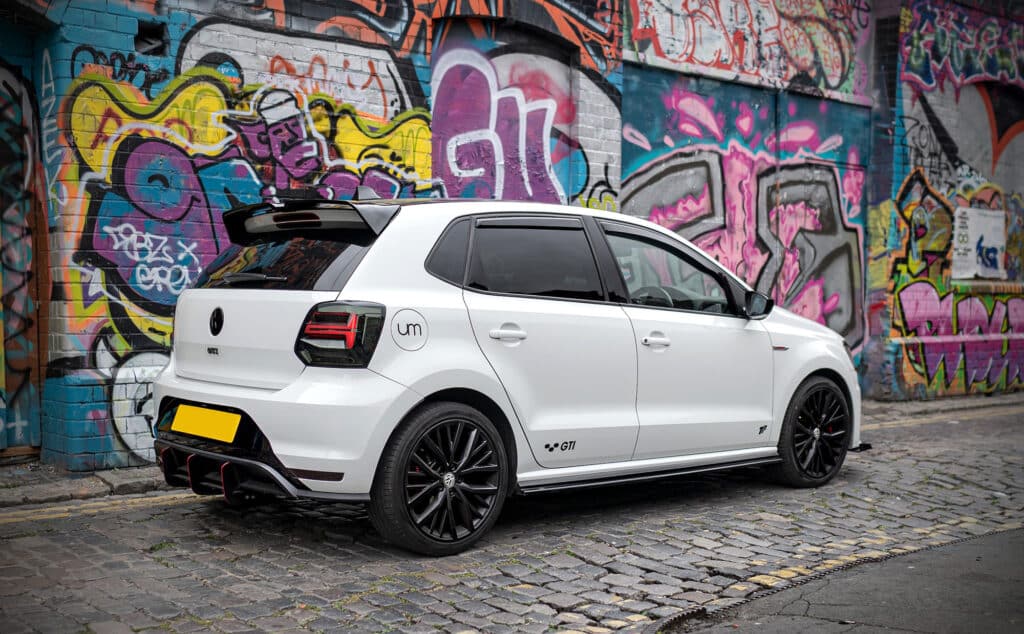
Stage 1 tuning generally refers to a handful of engine modifications that can be fitted on their own to your stock car.
Things to expect include basic remaps, as well as intake and exhaust upgrades where the original catalytic converters are left untouched.
All of these mods can be done on their own, but installing them together will give you better power gains.
On a modern car, the first upgrade is often a quick remap — which means plugging a computer (or tuning handset) into the diagnostics port and uploading slightly upgraded software to the ECU.

Adjusting the fuel, spark, timing, and boost will “unlock” more power from an otherwise stock engine.
A simple software update can yield serious power increases, even in normal everyday cars.
20 to 50+ hp is not unheard of from a turbo engine remap, but naturally aspirated models won’t give you that much — expect anywhere from 5 to 25 hp.
Some tuners will only do a remap and call it Stage 1, others like to include supporting modifications to maximize its effect — this is sometimes called Stage 1+.
These mods typically include a new air filter, either a short ram or cold air intake, and a cat-back exhaust system.
Cold air is denser than hot air, so feeding the engine as much cold air as possible is imperative when you want to maximize power.
Stock air intakes on modern performance-oriented cars are actually pretty good, and even a replacement performance filter that’s less restrictive than the paper one will help you achieve more power, but a proper cold air intake is better.
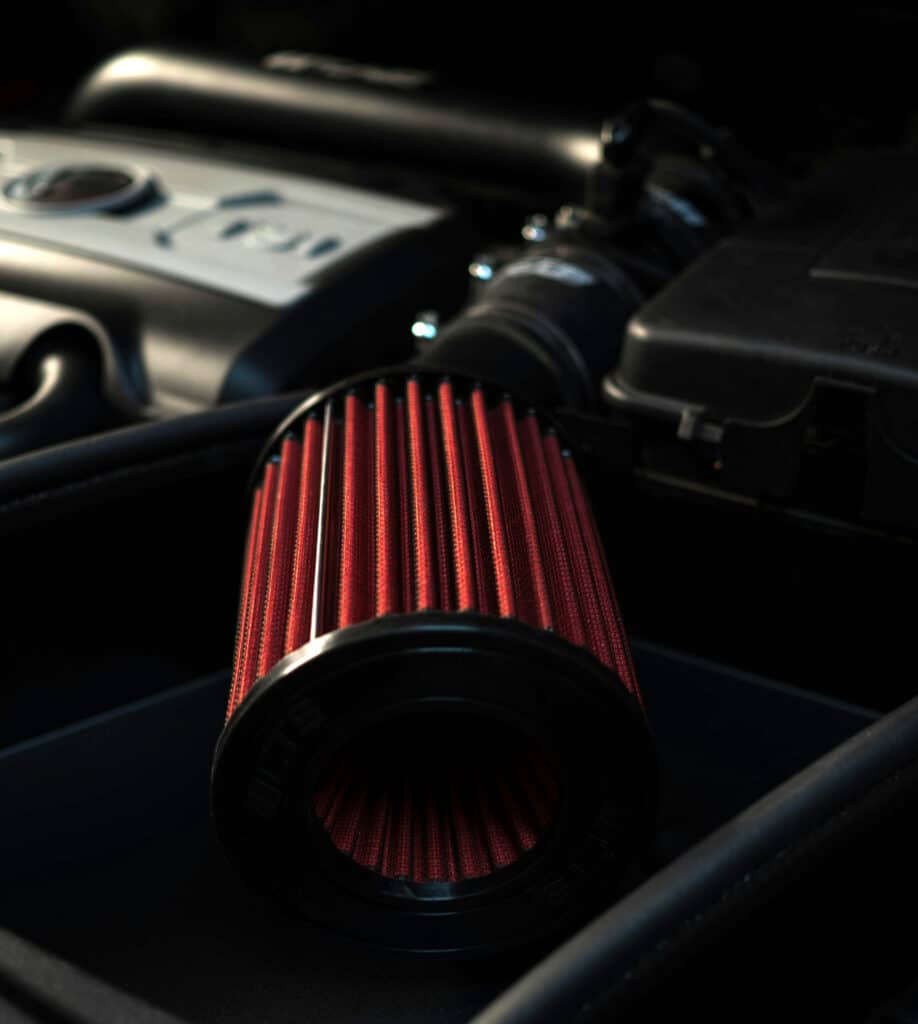
Some tuners will take a Stage 1 setup one step beyond the remap and filter and include a cat-back exhaust.
This makes sense, as the engine is now fed plenty of cold, fresh air, and you need to get rid of the exhaust gases as quickly as possible for better scavenging.
On a turbocharged car, improved exhaust flow means you can increase the amount of air the turbo can pump through the engine.
A less restrictive exhaust in combination with more boost will result in more power. Straight pipe exhausts are ideal in this case, but not recommended.
So, how much horsepower does a Stage 1 tune add? Again, it will vary between tuners and cars, even factors such as fuel quality and altitude.
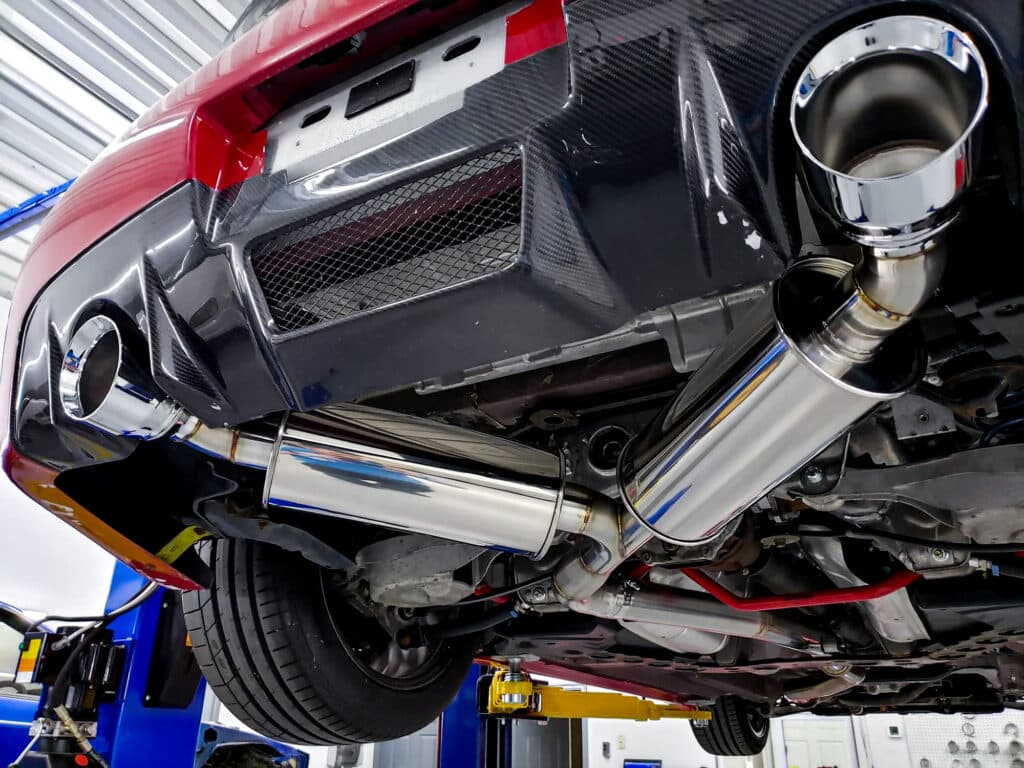
On a naturally aspirated car, you can expect anywhere from 5 additional hp, to 40+. A large displacement V8 engine that’s deliberately detuned from the factory has more untapped potential than a highly-strung 1.6L inline-four.
Some will argue that it’s not really worth doing a Stage 1 tune on a naturally aspirated car, and you’ll be better off either saving your money or doing more complex upgrades — such as swapping cams, increasing displacement, etc.
Then again, the Stage 1 tune will most likely make the car more responsive, even if it doesn’t pack a lot more power. That, combined with a bit of induction noise accompanied by a roaring exhaust, is never wrong.
Turbocharged cars are the ones that can see truly massive gains from a simple Stage 1 tune. A 50-85 hp increase from a remap, cold air intake, and cat-back exhaust is not unheard of on some four-cylinder turbo cars.
Stage 2 Tune
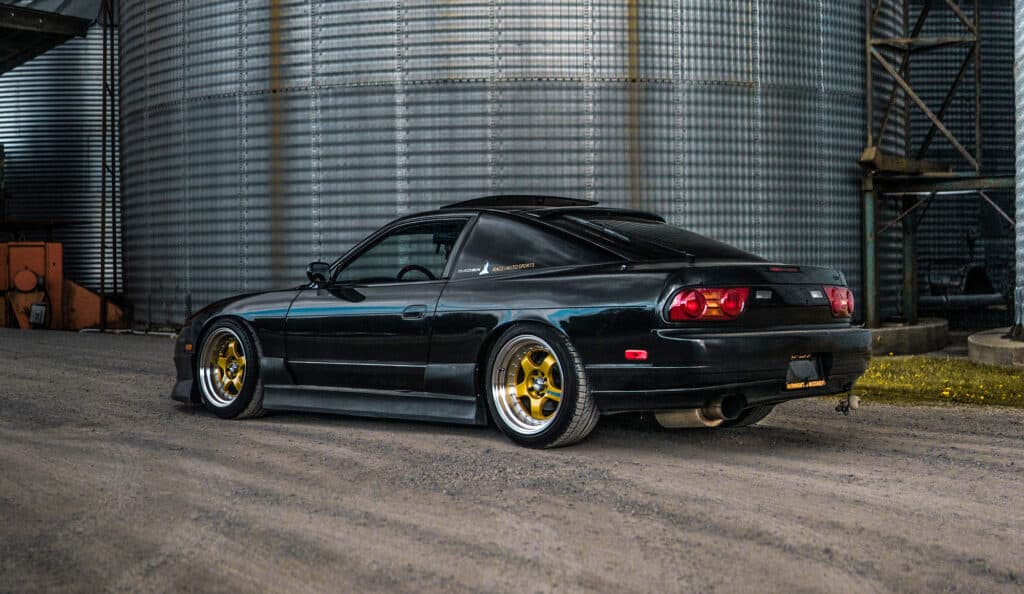
While a Stage 1 tune can be just a remap, an aftermarket air filter, and in some cases even include a cat-back exhaust, Stage 2 tuning tends to be even more diverse.
In essence, a Stage 2 tune seeks to eliminate weak spots found in factory standard cars. This usually includes the mods from Stage 1, sometimes with an even better air filter, and more exhaust parts.
On turbocharged cars, an intercooler is often part of a Stage 2 tune as well. The Stage 2 remap takes things a little further than the Stage 1 version, and this can be done thanks to the upgraded hardware.
A Stage 2 exhaust usually consists of a header, sports cat or de-cat pipe (also known as a test pipe), and a downpipe on turbocharged cars.
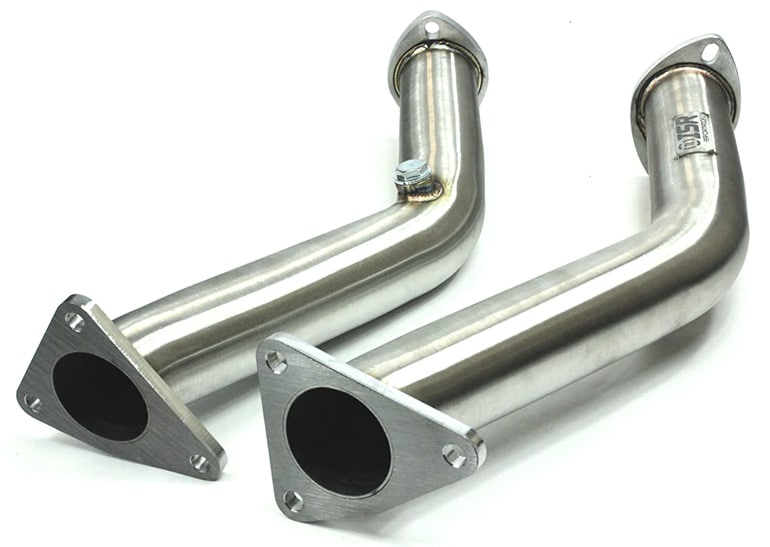
Changing the downpipe can give it a significant power increase, as turbos work best with as little restriction as possible.
These upgrades require a remap in order for the engine to take advantage of the improved gas flow.
In addition, if you don’t get it remapped, the dash will light up like a Christmas tree due to the altered readings from the exhaust sensors.
While many tuners only include a replacement panel filter in Stage 1, the best Stage 2 tunes include a proper cold air intake.
With the improved exhaust flow, it’s imperative to ensure the turbo isn’t restricted by the car’s stock air intake, and that the air is as cold as possible.
That brings us to the all-important intercooler. Even if the car comes with one as stock, a Stage 2 tune typically includes an upgraded unit, and there are a couple of reasons why you want one.
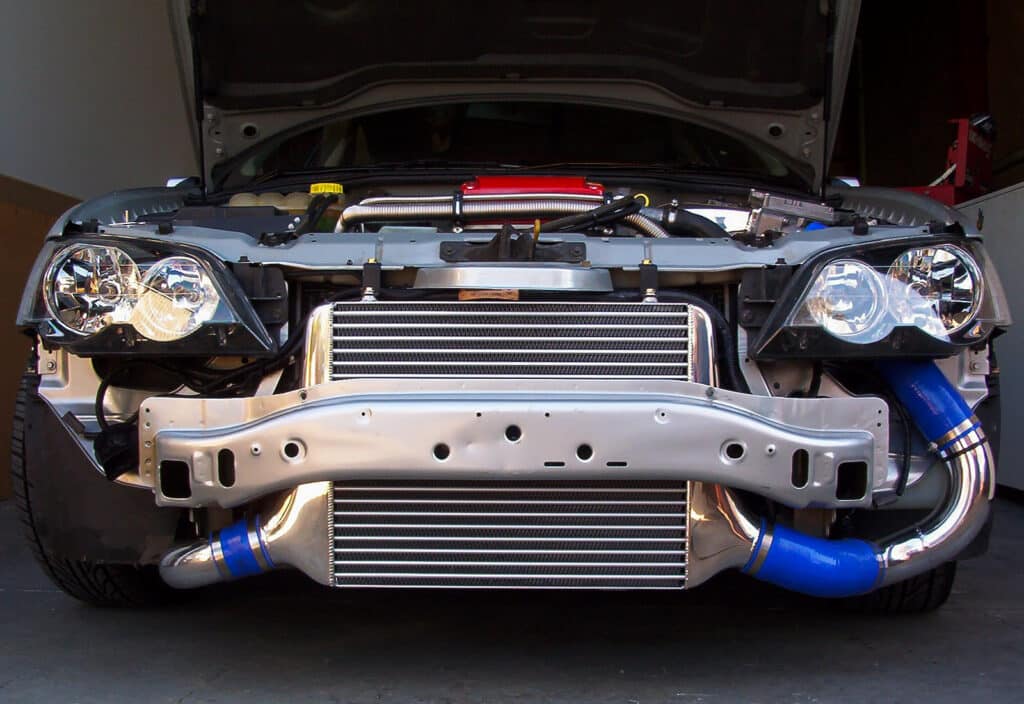
First, as air is forced through the turbo, it heats up, so the intercooler helps cool it down again — as we already mentioned, cold air means denser oxygen, which lets the engine make more power.
Second, engine power constantly fluctuates due to sensor readings, and when the temperature increases, power drops. The intercooler will help to combat this, allowing for more stable power figures.
While an intercooler can be used as a standalone modification, a remap will help squeeze out every potential ounce of power.
Now you’re probably wondering how much hp or whp a Stage 2 tune adds. A naturally aspirated Stage 2 build will probably give you somewhere in the region of 15 to 45 hp, again, depending on the same factors as the Stage 1 build.
A Stage 2 turbocharged car on the other hand can produce anywhere from 50 to 200 additional hp.
Proper Stage 2, or Stage 2+ cars are usually FBO, or full bolt-on builds, meaning they’ve installed every simple bolt-on performance part available for that engine.

At this point, tuners often recommend installing other supporting mods as well, without them officially being included in the Stage 2 upgrade.
These upgrades can include an uprated clutch, uprated intercooler pipework, and stiffer aftermarket engine and gearbox mounts.
Upgrading the clutch makes sense, as more power can cause it to slip, or fail, so you’ll need something that can handle the power.
Upgrading the engine and gearbox mounts may seem strange, but when you unleash more power, the original mounts may flex excessively, which can rob you of power that should be transferred to the wheels.
Stage 3 Tune
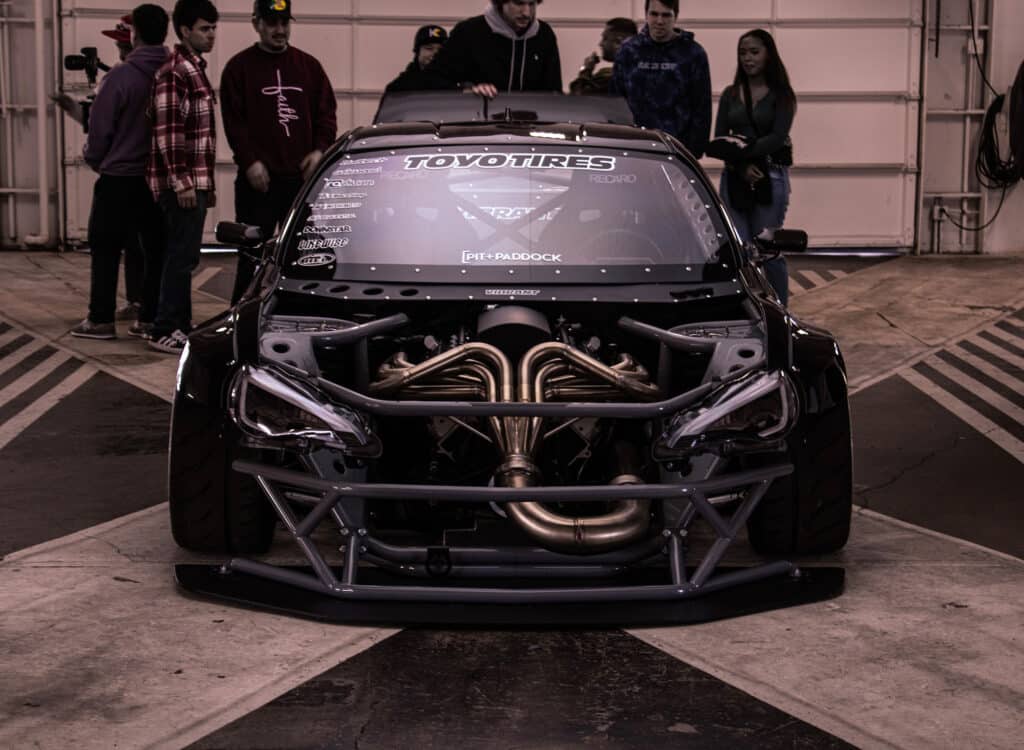
Most tuners will list a Stage 3 tune as their top-tier option, others will go further and include a Stage 4 and even Stage 5 tune. At this point, tuning stages can become even more confusing.
In most cases, a Stage 3 build typically features every performance part available for that particular engine.
Tuners who go beyond Stage 3 are usually referring to naturally aspirated cars, and the next stages involve turbo or supercharging them, and then maximizing the power they can produce in their new forced induction form.
Whether it’s a naturally aspirated, turbocharged, or supercharged car, at this point, the fuel system and engine internals will probably be the weak points and require upgrading.
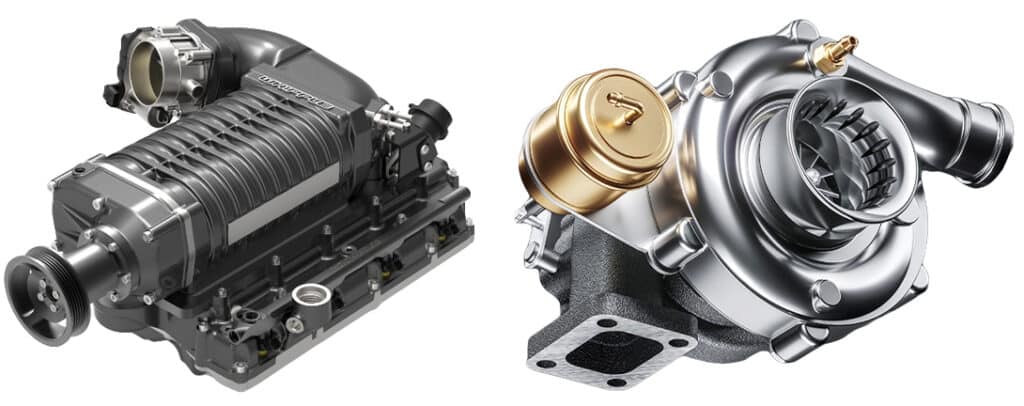
The exact parts involved in a Stage 3 tune will vary between cars, though, much more so than in Stage 1 and 2.
Bigger fuel injectors and the fuel pump are commonly part of a Stage 3 tune, as satisfying the engine’s thirst is vital to keep it from having a meltdown — quite literally.
The fuel helps keep temperatures down inside the cylinders, and if there’s not enough fuel, things will overheat.
Engine internals are also part of a Stage 3 build. Some tuners include parts such as cams, valves, valve springs, cranks, pistons, etc.
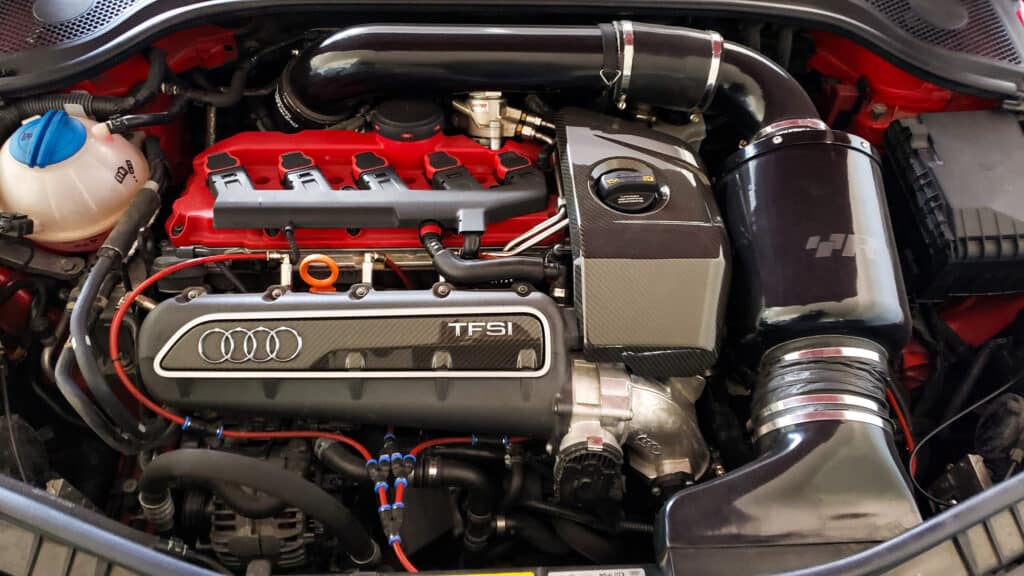
These parts will either increase power themselves or make the engine capable of handling more power through increased boost.
Some engines are overbuilt for their power levels straight from the factory, and won’t need any internal upgrades, others will require various parts to avoid blowing up when power and stress are increased.
Stage 3 turbocharged cars will sometimes get either hybrid or big turbo upgrades, as one of their biggest limiting factors at this point can be the turbos themselves.
Once you reach a certain point, the turbo will either crumble under pressure (quite literally), or the air it forces into the engine will be too hot.
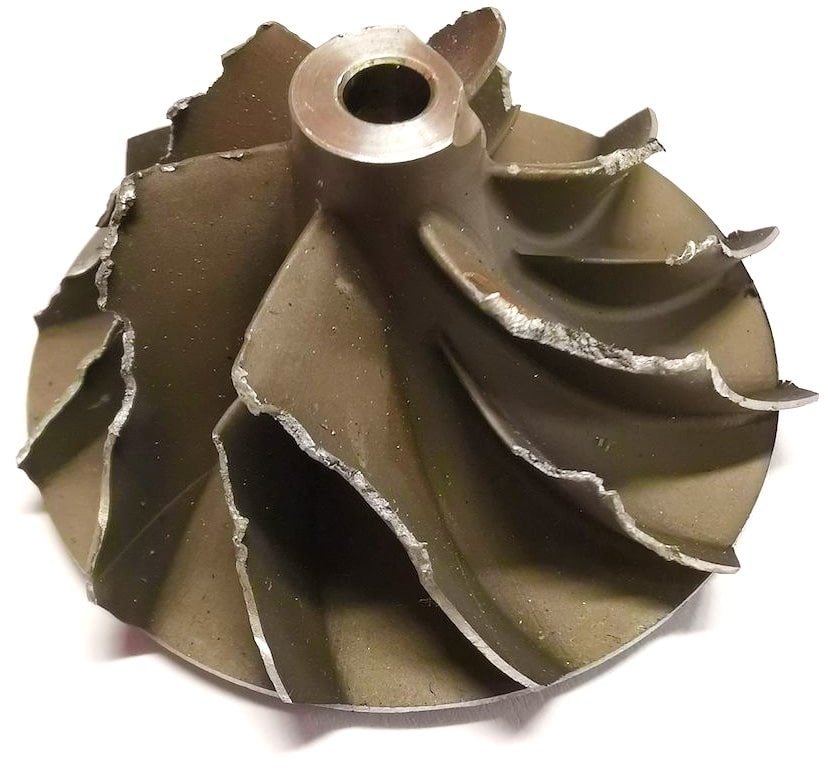
At the end of the day, how much hp does a Stage 3 tune add? Anywhere from 100 hp to more than 500 for a turbocharged car. A naturally aspirated one will probably see somewhere in the region of 30 to 100 hp.
Again, when a car is tuned to this level, some supporting modifications are usually needed in order to keep it driveable.
Pushing out tons more power than the manufacturer intended means you should upgrade the brakes sooner rather than later.
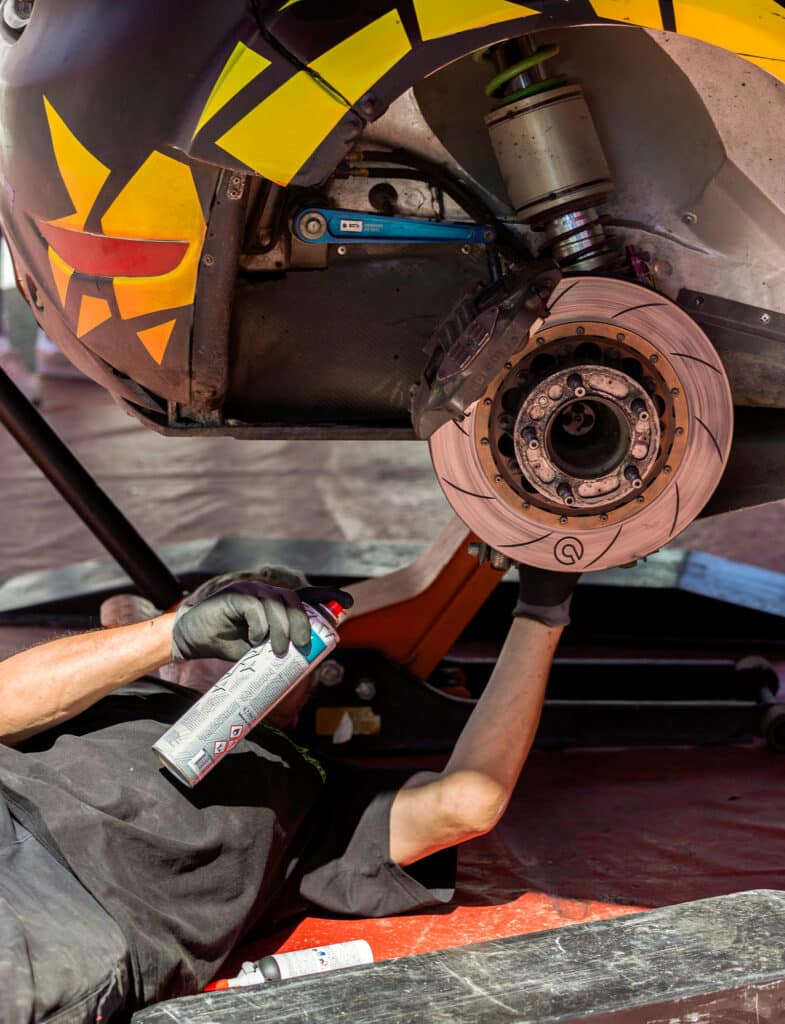
A car that’s capable of much higher top speeds and faster acceleration needs a set of heavier anchors to bring it to a halt — especially if your car wasn’t a performance model to begin with.
Another area that will probably need an upgrade at this point is the tires. A car that pumps out double its original power, or more, will need as much traction as it can get.
Grippy tires aren’t just great for launches and getting you through the twisty parts, they also play an important part when it’s time to slow down.
Upgraded suspension components will help make the tires’ job easier by keeping them in contact with the road surface, and the handling will see huge improvements.
A limited-slip differential, or LSD, is also a welcome addition, so you can make more use of your newfound power and actually transfer it to the road in the form of acceleration rather than tire smoke — this is especially true for a front-wheel-drive car.
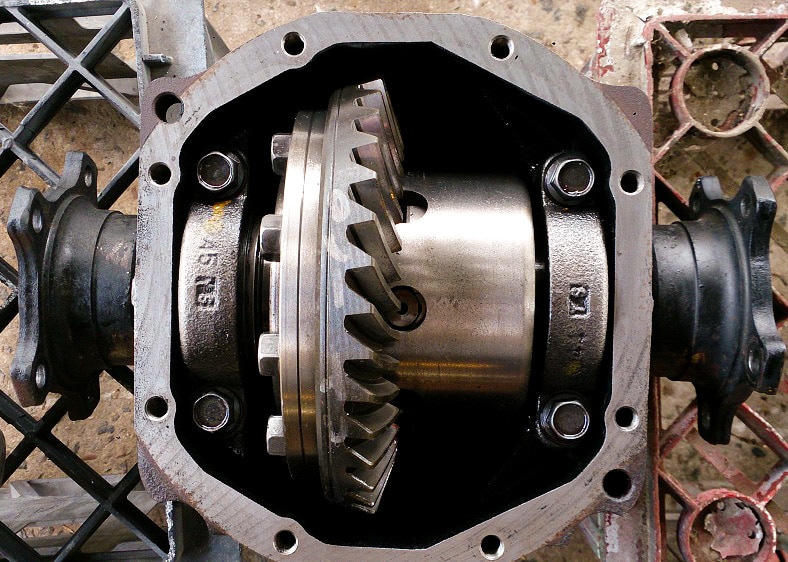
That’s pretty much all there is to the different tuning stages, but like we’ve said multiple times already, this is just a rough guide and the meaning of stages can vary a lot between cars and tuners.
What’s considered Stage 2 mods for one particular engine can be very different on another one — and that goes for the other stages as well. What one tuner calls Stage 1 may be another shop’s Stage 2.
Concluding Thoughts
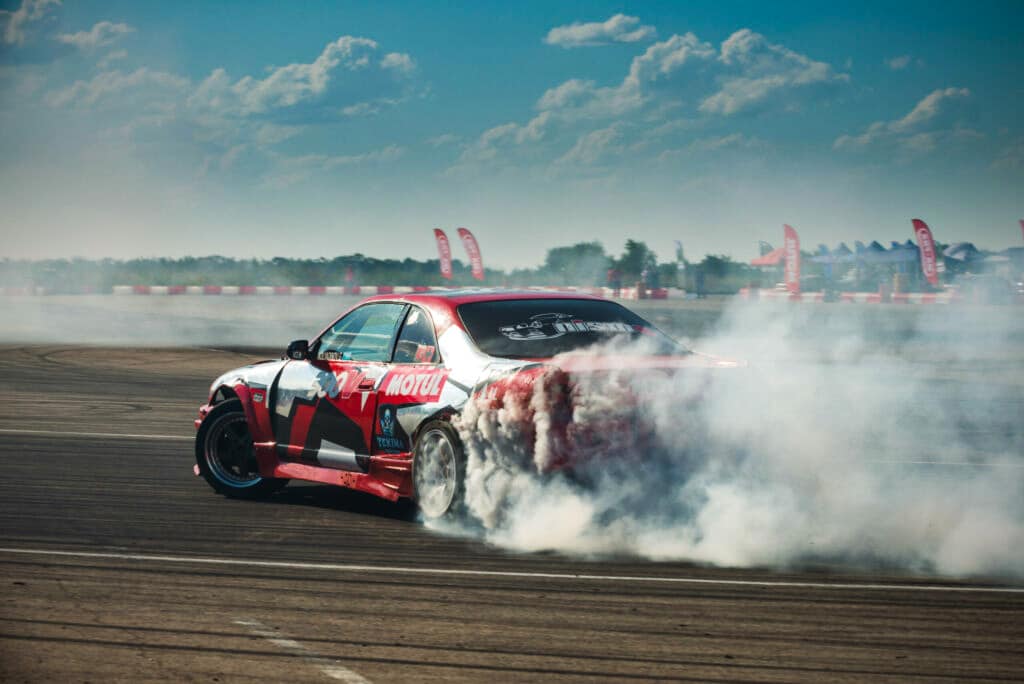
As you’ve gathered by now, researching tuning stages for your car online can be a confusing experience, as there aren’t any strict standards for companies to adhere to. Even if there were, engines are different, and the power figures would still vary wildly.
However, there are some general rules for tuning stages: A higher stage indicates a more aggressive tune and sometimes more supporting mods.
Usually, higher stages require more supporting mods, and that also means they’re more expensive.
What stage mods and tuning do you have on your car? Let us know in the comments below.

